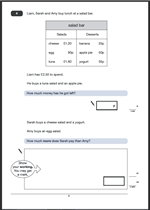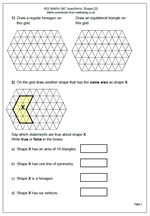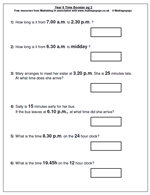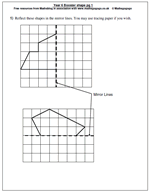 It’s never too early to get to grips with some SAT style questions in Year 6 and we have an increasing number of these. There are two similar maths worksheets here which demonstrate a number of techniques that can be used to answer SAT questions.
It’s never too early to get to grips with some SAT style questions in Year 6 and we have an increasing number of these. There are two similar maths worksheets here which demonstrate a number of techniques that can be used to answer SAT questions.
The first question asks for two numbers which add up to 140 from the selection given. The easiest approach to this is firstly to look at the units and find two which add up to 10, such as 28 and 32. Then to look to see if the tens digits are suitable; in this case they are not.
Try again 99 and 91 – this time too big.
Try 74 and 66.
6 and 4 make 10. 70 and 60 make 130. Add 10 to 130 makes 140 – there is your answer!
For question 3 the order is important. Start with an edge of the triangle which already has two numbers in.




